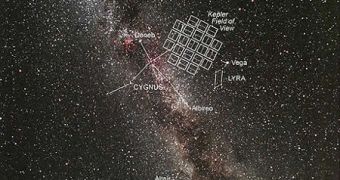Thus far, the NASA Kepler Telescope has confirmed the existence of several exoplanets, and experts managing the mission proposed the existence of 1,235 candidates. Now, scientists are thinking of ways to use the observatory to detect gas giants with rings around them.
What astronomers are particularly interested in are Saturn-like planets, massive in both mass and size. Thus far, Kepler has had very little success in identifying gas giants that feature gas rings around them, similarly to how Saturn and Jupiter do in our own solar system.
The vast majority of objects the observatory detected are hot Jupiters, a class of objects that include gas giants orbiting very close to their parents, at distances that would never allow for the formation of hydrogen gas and ice rings.
These objects are also tidally locked with their parent stars, which further prevents them from forming rings. What this means is that the gravitational interactions between the two objects are so intense that the planet always maintains the same face oriented towards the star.
As such, Kepler should focus its attention further away from stars, deeper into each object's solar system. But this also makes planets harder to discover, experts say. However, the telescope carries some sensitive instruments, which could make things easier.
“The ideal areas to try and look for rings are the regions Kepler is sensitive to,” University of California in Los Angeles (UCLA) expert Hilke Schlichting. He proposes new ways for Kepler to use its instruments to conduct science.
He collaborated closely with Canadian Institute for Theoretical Astrophysics expert and colleague Phillip Change on this research. The thing that stifles their plans is the fact that there are no ringed gas giants to study.
“If we could detect several of these systems, they could tell us how the bodies got there,” the team says, referring to the position of gas giants within any given star system. Still, there is no reason to lose hope.
“Given that Kepler has found 1,000 extrasolar planet candidates, the chances that we would find rings in this data are very high,” the researchers explain. Over the next few months, as ground telescopes verify the findings, the team will be searching for rings around prospective candidates.
Given the vast amount of data available for scrutiny, the investigators are convinced that the first exoplanet featuring a ring system will be discovered before the end of the year, Space reports.

 14 DAY TRIAL //
14 DAY TRIAL //